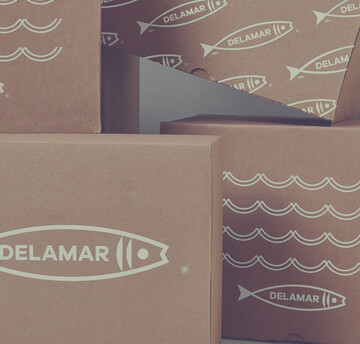Brand Day London: how Strichpunkt redesigned Audi for 2025.
The request was certainly unique, Jochen Rädeker, Managing Partner at design agency Strichpunkt, told the audience at Brand Day London. Audi had asked his agency to redevelop the Audi brand … for 2025. “We had to develop a brand that would be future proof for media that we don’t even know yet,” Rädeker said.
A unique request required a unique approach, so Strichpunkt challenged conventions of corporate branding and rebuilt Audi’s identity based on principles of web development and atomic design. They even made the entire brand identity open source for anyone to use.
Certain elements needed to stay, like the iconic rings in Audi’s logo, which are more than 100 years old. However, Strichpunkt’s multidisciplinary team analyzed, deconstructed and reassembled the brand to exist in its simplest form so it could flexibly accommodate any touchpoint.
As Rädeker put it, “We had to ask the most important question: what is really relevant for the brand?” Instead of focusing on how Strichpunkt could improve or embellish Audi’s branding, they worked on simplifying it.
Industry transformation sparks brand transformation
Audi’s CEO, Rupert Stadler has spoken publicly about the company’s transition into the future, where it will serve as not just a purveyor of cars but of digital services and mobility. This revolution meant that Strichpunkt had to not only simplify the brand, but reposition it to express new meaning.
“It’s not just Audi talking about this shift – leaders across the auto industry are talking about shared autonomous electric vehicles, mobility as a service,” said Rädeker, “the digital age is challenging traditional brand models as well as influencing customer behavior and if it changes the industry, it obviously impacts the brands themselves.”
So to redesign Audi for 2025, the first rule was putting digital first. “We had to rethink branding completely, from the most complicated media to the most simple media.”
New challenges require new talent
Thomas Michelbach, Head of Development at Strichpunkt, lead a small team of motion designers, strategists and developers to execute the Audi redesign. “The new age doesn’t just challenge the market and brands it also challenges us as an agency, and for all of those new challenges we need new talent,” said Michelbach.
Right now his team is wrestling with everything from designing voice interfaces (how do you design an interface that doesn’t have any graphic elements?) to AR/VR interfaces as well as figuring out how to leverage generative design, which means using machine learning to automate interface design. Strichpunkt doesn’t see machine learning and AI as threats to job security, instead they’re putting automation to work for them – leaving more time and space to be creative.
Corporate design should be a collaborative, interdisciplinary process
“In the ‘old days’ you had brand manuals and guidelines dictating how to use the brand, but now all of those rules have to be much more dynamic,” stated Rädeker, “Therefore, we developed the Audi brand platform to document all of those elements. It’s completely free, anybody can access it. We opened the whole platform up for anyone who wants to work with the brand.”
The elements in the Audi brand platform work responsively on every device and there are guidelines and examples, meant to inspire people to work with the identity, not to limit them to a strict set of rules. There’s even an interactive learning tool inside the platform that essentially gamifies branding, making it fun to learn how to work with the brand.
On top of making the entire identity open source and generally encouraging knowledge sharing, Strichpunkt also partnered with a competitor to complete the project. Joining forces with KMS Team, Strichpunkt handled all digital design, and KMS Team worked on print. This unorthodox approach lead to a successful outcome, Audi won 2017 Red Dot Brand of the Year.
As Rädeker emphasized, “it’s far better to share your knowledge, to invite your colleagues to join in your work, and invite customers to be part of the team. Don’t just go to the customer every 4-6 weeks. Invite them to be part of the team, have daily stand-ups and it will really push your work to a better quality.”











